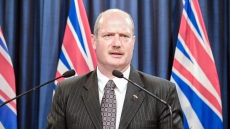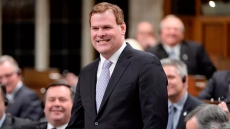OTTAWA — The Bank of Canada says it's prepared to take action to help navigate the economic uncertainty tied to low oil prices as experts predict it could once again cut its trend-setting interest rate.
Senior deputy governor Carolyn Wilkins made the remarks in a speech Tuesday — as many observers expect the central bank is preparing to drop its rate even further next month.
The Bank of Canada blindsided markets in January by lowering its overnight rate to 0.75 per cent from one per cent.
At the time, governor Stephen Poloz said the cut was needed as insurance for the "unambiguously negative" effects of plummeting crude prices on the oil-exporting country's economy.
In prepared remarks of her speech Tuesday, Wilkins said the central bank has the ability to move the inflation rate back up towards its two per cent target.
"If potential output growth turns out to be lower than we think, we have the tools to bring inflation back to target," said Wilkins, who expects the Canadian economy to grow with help from the lower loonie and a stronger U.S. economy.
She predicted Canada's non-energy sector to lead the growth.
"Monetary policy is contributing to this effort by providing an environment of low and stable inflation, while supporting the adjustments needed to return the economy to sustained and balanced growth," she said.
"We'll get there and it will be a very good thing for Canada."
Wilkins also indicated the central bank is monitoring job-market concerns, such as the low average number of hours worked and the high rate of involuntary part-time workers.
She said "prime-age" workers between 25 and 54 years old and young people between 15 and 24 years old remain underemployed.
The participation rate of prime-age workers in the labour force fell "substantially" last year, while the average duration of unemployment has been hovering close to its post-financial-crisis peak of around 21 weeks, Wilkins added.
"That is a long time to be unemployed," she said in the prepared speech titled, "Minding the Labour Gap."
"Setting the right monetary conditions, in the context of our inflation targeting regime, is the best thing we can do for the labour market."





